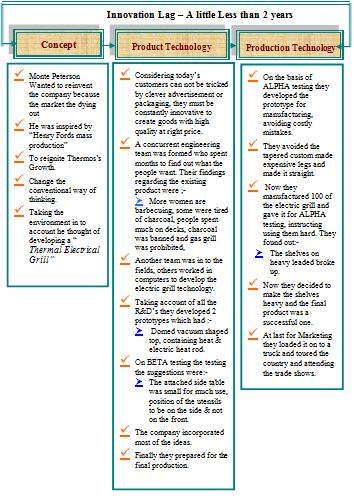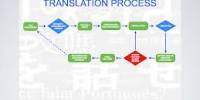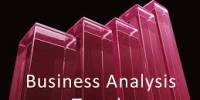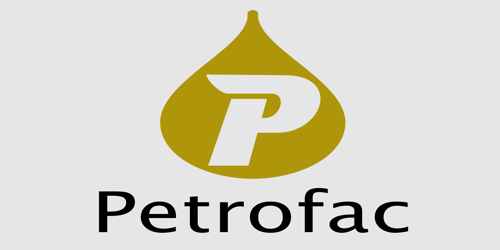About The Case
The case is about Thermos, a company that produces thermos bottles and boxes and facing competition from other competitors. When Monte Peterson had taken over the company in 1990, the company was in a very bad condition and he as the CEO had to do the toughest works i.e. reinvent the company.
For this he developed an idea and to take it to success initiatives were taken- team was formed, assistance was taken, and R&D was done. After facing few sticky situations they finally succeeded. Their aim was accomplished and the whole business exploded. This boom was a sort of dream coming true for them.
About The Company
Name of the Company: Thermos
CEO: Monte Peterson
The Company was taken over on: 1990
The Mission Was : To develop a new product (within deadline) and
Increase companies sales.
Products: Thermos bottles, lunch boxes and Thermos Thermal Electric
Grill (the newly invented product)
Personnel Assistance From: Fitch Inc.
Competitor: Schaumburg
Now what are the reasons behind this boom we have to mull them over with all we learnt in our course “Business Organization and Management “and answer the following questions;-
Using the “Innovation Process Model” we have to describe how the innovation did occur in this case?
How was “Innovation Lag” occurred in this case?
In our opinion what single factor contributed most to the success of Thermos’s Thermal Electrical Grill?
As a member of Thermos Life style team, how would you answer a manager who asked you “how can I make my company more innovative?
Q# 1. Using the figure “Innovation Process Model” describes how innovation occurred in this case.
Answer:-

The Innovation Process: is the systematic development and practical application of a new idea.
In this case of Thermos, the innovation process is ,from the idea of Monte Peterson’s reinventing the business, forming the team, R&D in to the fields, the development of a prototype, both ALPHA and BETA testing and to the final successful production.
The Concept: is the very preliminary stage of the whole process model where the idea occurs to an initiator. In this case study it’s the stage when Monte Peterson wanted to “reinvent” his business, inspired by Henry Fords Mass Production.
The Product Technology: the just second stage of the process model where what ever to be created is prototyped or dummied.
In this case, this concept includes from the field research of the Lifestyle team till the making of Monitor and Merrimack, to Thermal Electric Grill Dummies.
The Production Technology: the last stage of the innovation process where the prototype developed for a profitable production.
Here it’s finding out of the flaws of the Monitor and Merrimack and developing it without any flaws for the final production to send it to the market.
The Innovation Lag: is the time it takes the idea to be translated in to a appropriate demand.
In case of the Thermos’s Thermal Electrical Grill, the innovations lag time is from 1990, when the Monte Peterson took over and thought of recreating the business till the of 1992 when they took the product to the National Hardware Show.
The “Innovation Process Model for Thermos’s Thermal Electric Grill”

The Process Model in Details
Starting from the Concept:
Monte Peterson took over the Thermos a company that produced thermos bottles and lunch boxes. The company was facing competition from other companies “neck to neck”. Beside their product became common as a number of department stores were selling them.
Considering all these he wanted to “reinvent totally the whole company” for reigniting the company’s growth offering some thing new. He saw the market place was experiencing a revolutionary change and was inspired by the “Henry Fords Mass production”. To meet the challenge he has to offer nothing but constantly innovative goods at the right price and quality.
The idea of reinventing the business was the action of an ideal business man. But he alone can not do it. He needed to personnel to do this job. In the fall of 1990 he assembled concurrent engineering– a product development team taking middle managers from various departments like engineering, marketing, manufacturing, & finance .Fitch inc. an industrial design firm also provided Thermos with ten members in this project. They just want to push Thermos beyond the boundaries. The idea was to build a network around the market-the market of grills. All the members were dedicated to complete the project by the August 1992 to present it into the “National Hardware Show.”
His recognition regarding the real fact and effort bore fruit- the discovery of Thermos’s’ Thermal Electrical Grill an ecological cookout. This blistered his business.
The Product Technology (how should the product be designed):
Taking it as a mission the concurrent engineers spent months on to the fields asking people about their needs regarding the electric cookout. They emphasized on the market and the customers cookout needs, not the customers. With the help of the Fitch Inc. the life style team defined the market and the needs. What they found was more women were barbecuing and some cooks were getting tired of smoky charcoal. They also found that homeowners were spending much for building decks. Beside charcoal starter and gas grill was banned or prohibited in many parts.
When the life style team was in to the field, another team was spending time in computer developing technologies for electric gas grill.
When the life style team returned to the headquarter completing the research, an unclear definition of a new grill which should be a handsome piece of furniture and ecological, cooked food that tasted good.
Agreeing and accepting these factors the team produced two models –Monitor, looked ugly and Merrimack, stunning plastic foam dummy.
These were based on a domed vacuum top that kept the heat inside and raised the cooking temperature and directly placed electric insulated heating rods to sear the meat and give the brown barbecue linings.
The January 1992, to see that the prototype works; they invited customers and some of the buyers and resellers. The main reason behind this was just to see if the prototypes are meeting the expectations. Obviously this worked and the visitors made helpful suggestions like – the side table was too small for much use and the utensils should be placed sideways and not in to the front. All these suggestions were turned in to modifications for the final production.
Finally, the Production
When almost all about the latest needs of electric grill was learnt and modified to the prototypes, the manufacturing team was bought in to the process from the beginning. Here too they avoided some mistakes which would make it an expensive one and the whole project might be delayed for more three or four months. When this was settled they went for an initial production and produced 100 electric grills. This was distributed for Alpha tasting. The employees were instructed to use them heavily. With this instruction they discovered that the shelves broke easily and needed to be made with heavier plastics. Finally this too was fixed.
Now it’s a demand, shaped on the basis of what people wanted –so they would surely to buy it. But the buying or selling is not possible, unless the customers know what is the product or its specialties. For this i.e. letting people know about the Thermos’s Thermal Electric Grill, they toured the country taking some of the grills on to a truck. They attended the National Hardware Show, to attend which they set the deadline.
The product was really turned in to a satisfactory demand and it proved to a profitable one. Soon after the introduction the sales started sizzling and retailers like Kmart were ordering them in a greater volume. Besides it also won four awards for its designing.
This is how the idea of Monte Peterson was turned in to an effective and efficient product with its faster moving production.
Q# 2. How was the “Innovation Lag” avoided in this case?
Answer:-
A number of facts contributed much to avoid the company’s innovation lag.
If we start from the beginning, it’s clear that the idea was put in to action sooner it was thought by Monte Peterson, the CEO of Thermos. Had he delayed in forming the team, it would have taken long to innovate the new product.
Again, if the team members were not committed to the project and work in to the field or workshop(immediately they were appointed ) they were sure to be lagging behind extracting concepts regarding the product.
In the product conceptualization stage we see that, had the team made a single good looking working prototype and not the Monitor and the Merrimack, it would have cost them six times much and taken six times longer to produce.
In the final stage what we see is they rejected the custom made tapered legs and accepted the straight ones. Had they not listened to the manufacturing people that would have made another cramp? The R&D director Mather too accepts this fact when he says” if that mistake ( choosing legs) hadn’t been caught, we would have lost three to four months doing rework design”
Taking the help and suggestions of customers and retailers from time to time and adapting suggestions also played a significant role avoiding the innovation lag.
Q# 3. In your opinion what single contributed most to the success of Thermos’s Thermal Electrical Grill?
Answer:-
In our opinion the single factor that contributed most to the success of Thermos’s Thermal Electrical Grill was the Concurrent Engineering or taking middle managers from all the departments- financial, manufacturing and also the help of Fitch Inc. an industrial firm that helped Thermos with 10 people for conducting market research.
This team was not only an ordinary team rather a “life style” team that remained loyal to the company and took it as a challenge to develop the new product. They themselves set the mission and the deadline : wanted to attend the National Hardware show with the new product by August,1992. They were not offered extra for this project ,to be motivated.” Our reward is that the team owns the project right from the beginning to the end, and that gives us a sense of pride. The real reward is a new product that gets up and flies.” said Mather, the R&D director and also a team member.
The best evidence regarding this, i.e. concurrent engineering, the single factor contributing most to the success, comes when the Monte Peterson, the CEO himself says” ….made the project a success by sticking doggedly to the golden rules of product development: he formed a fast moving team that had a commitment from the top management, understood the market needs and set and met the rugged deadlines…… “
Q# 4. As a member of the Thermos Thermal Life Style team, how would answer a manager who asked you how can I make my company more innovative?
Answer:-
The business environment never remains same, it changes and faces challenges continuously. The needs of the customers too changes continuously. A company to survive must realize this. They should constantly carry out market research and developments to understand the real needs of the customers and develop products according to it.
They should always be Analyzers in their attitude and try best to lead the market.
Now what ever new is invented, the company should not stick to that for long. Again and again they have to carry out the R&D’s.
The innovation also depends largely upon the employees and their dedication towards the company and the work. They should be willing to cope with any sort of challenges.
As a member my ideas behind being more innovative is –
- Ø Not sticking to the old ideas.
- Ø Set missions.
- Ø Think and let the others think something new storming to launch in to the market.
- Ø Analyze how important or acceptable the ideas is to the customers.
- Ø Form the best team, taking personnel from various departments.
- Ø Constantly undertake market research and developments efficiently and effectively.
- Ø Let the employees also take part in the taking the company towards development.
Conclusion
The case is really an inspiring one. It tells us how a company realizes the need to be changed and start from a scrap of idea and reach the boom. There are a number of lessons to take form this case. This is one of the thousands of successful stories which all the companies determining for innovation should take in to consideration and success –a struggling one has always been sweet as honey.
Lessons from the Case Study
There are a number of lessons to learn. Some are given below;
- Ø Ideas should be sticking.
- Ø Team should always be a “Concurrent Engineering one”.
- Ø The team should start working and spend time in the field.
- Ø Give customers and marketing intermediaries the priority.
- Ø Consider factors such as social, ecological etc.
- Ø Do not go right in to production.
- Ø Develop prototypes of at least two types
- Ø Let it be both Alpha and beta tested.
- Ø On the basis of these testing redevelop it.
- Ø Avoid time consuming and costly mistakes.
- Ø Finally go in to production.
- Ø Launch the product in to the market.
- Ø If the product is at its best form its sure to be accepted and appreciated.
Appendix
- Ø Alpha testing: (functional test) to test the product within the firm to see how it performs in different applications
- Ø Beta testing: (consumer test) test the product prototype within a set of potential set of customers to get the feed back.
- Ø Marketing intermediaries: the set of outside forces who helps the companies to promote the product into the market.
- Ø Analyzers: analyzes the market and its opportunities.
- Ø Market leader: leads the market in offering products, undertaking the R&D’s
- Ø R&D: Research and development.
References
- Ø Management (9th Edition)
By: Kreitner
- Management – A Global Perspective (10th Edition)
By: Koontz
















